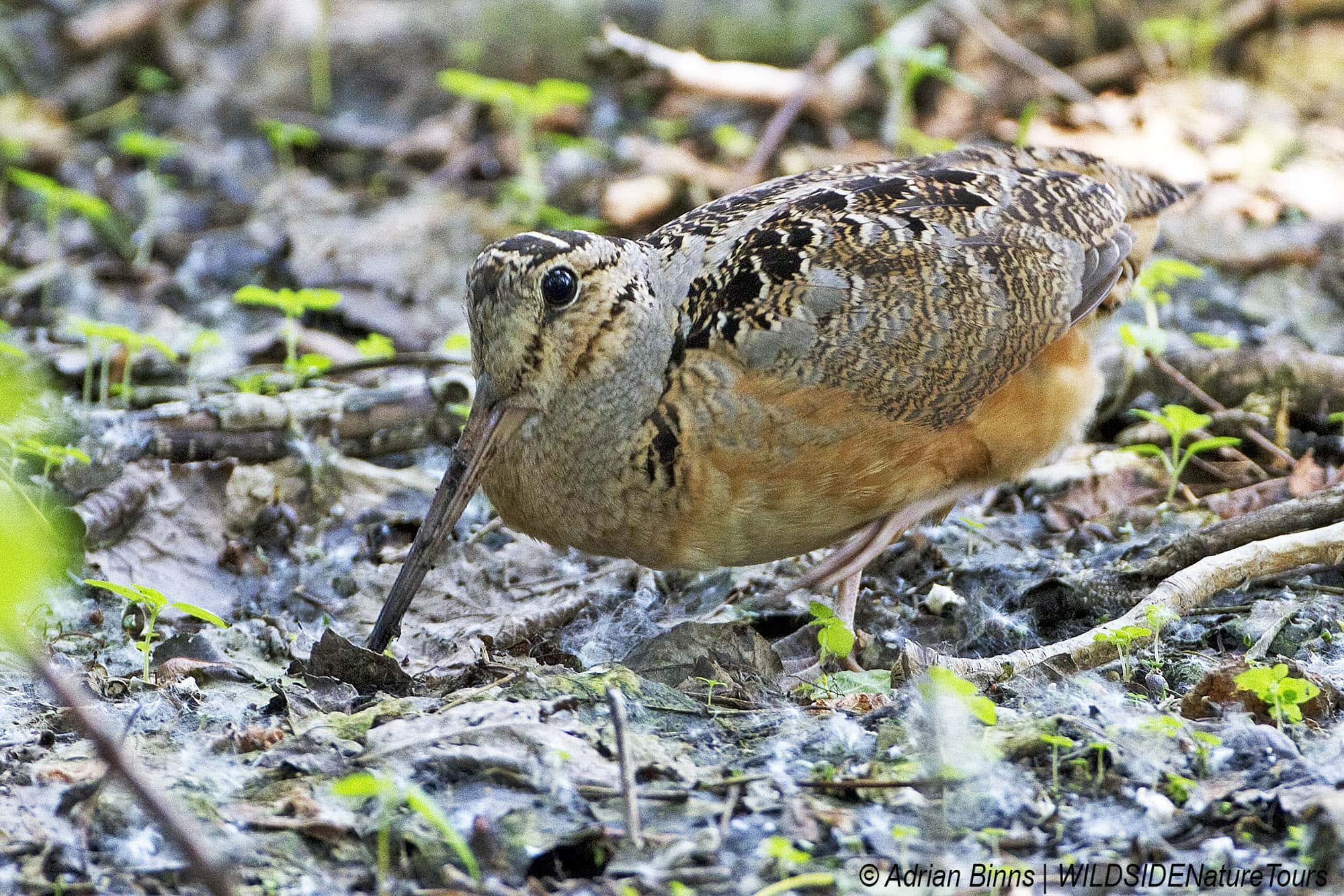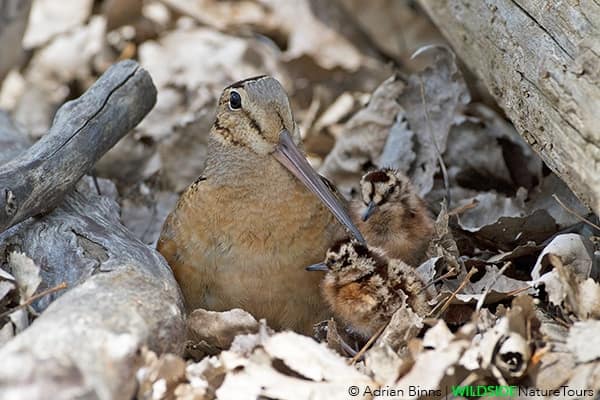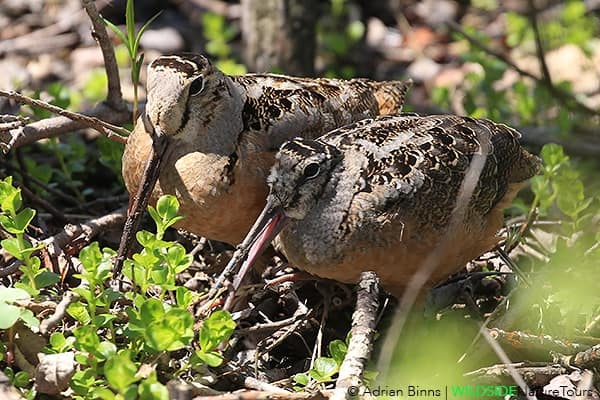
Woodcock Wander
Jun 17, 2020 | by Adrian Binns
I have a great affinity for birds that can blend easily into their environments. Owls and nightjars come to mind, perfectly-camouflaged against bark or on the ground. Their cryptic colouration and patterns blend in so well that we often walk past them without realizing they are there. Shorebirds especially in breeding plumage and on the breeding grounds are like that. One unique member of the shorebird family is the American Woodcock, a chunky, robin-sized bird that inhabits young moist woodlands and edges of old fields.

American Woodcock, perfectly camouflaged on her nest amongst leaf litter
Magee Marsh, on the NW shore of Lake Erie, is a wonderful place to see woodcocks in action, whether displaying, feeding or foraging. Each year during our Ohio-Michigan: Magee Marsh & Kirtland’s Warbler tour in May, we often find them stutter-stepping through leaf litter, fallen branches and undergrowth, their bodies rocking back-and-forth. Occasionally we have seem them with newly-hatched chicks.

American Woodcock with day-old chicks
The young are precocial – growing very quickly while under care of their mother.

American Woodcock mother teaching young to feed
Woodcocks have a number of structural features and adaptations that make them unique. Their 3″ long bills are flexible, with a sensitive tip at the lower third; the female bills are slighter longer than males. This allows them to probe for earthworms, their main diet, and open their bill underground to grab invertebrates. Their nostrils are positioned at the base of the bill, so they can still breathe when their bill is deep into soft soil.

American Woodcock has a flexible tip of the bill
Their large eyes are set far back, and high on the sides of the head, allowing them to see 360 degrees – especially useful when the bill is sunk into the ground.

American Woodcock have a visual advantage, able to see 360 degrees
In most birds, the ears and brain is located behind the eyes. Woodcocks evolved differently, with its eye situated near the top of the head, and ears set forward between the base of the bill and eye sockets. This leaves room for the brain below the eyes. It all seems upside-down, backside-to-front!

American Woodcock
Another adaption is the sound of its wings during aerial courtship displays. When the woodcock takes flight, air passes through the stiffer narrow outer primaries producing a trilling or twittering sound. Which brings me to how it possibly got the colloquial name “Timberdoodle.” Timber certainly because of the woods that it lives in. But doodle? Possibly because it stops and stands for a while, aimlessly rocking back-and-forth as if trying to make up its mind what to do. Or possibly, the twittering of display flights sounds like scribbling or doodling in the sky?
































